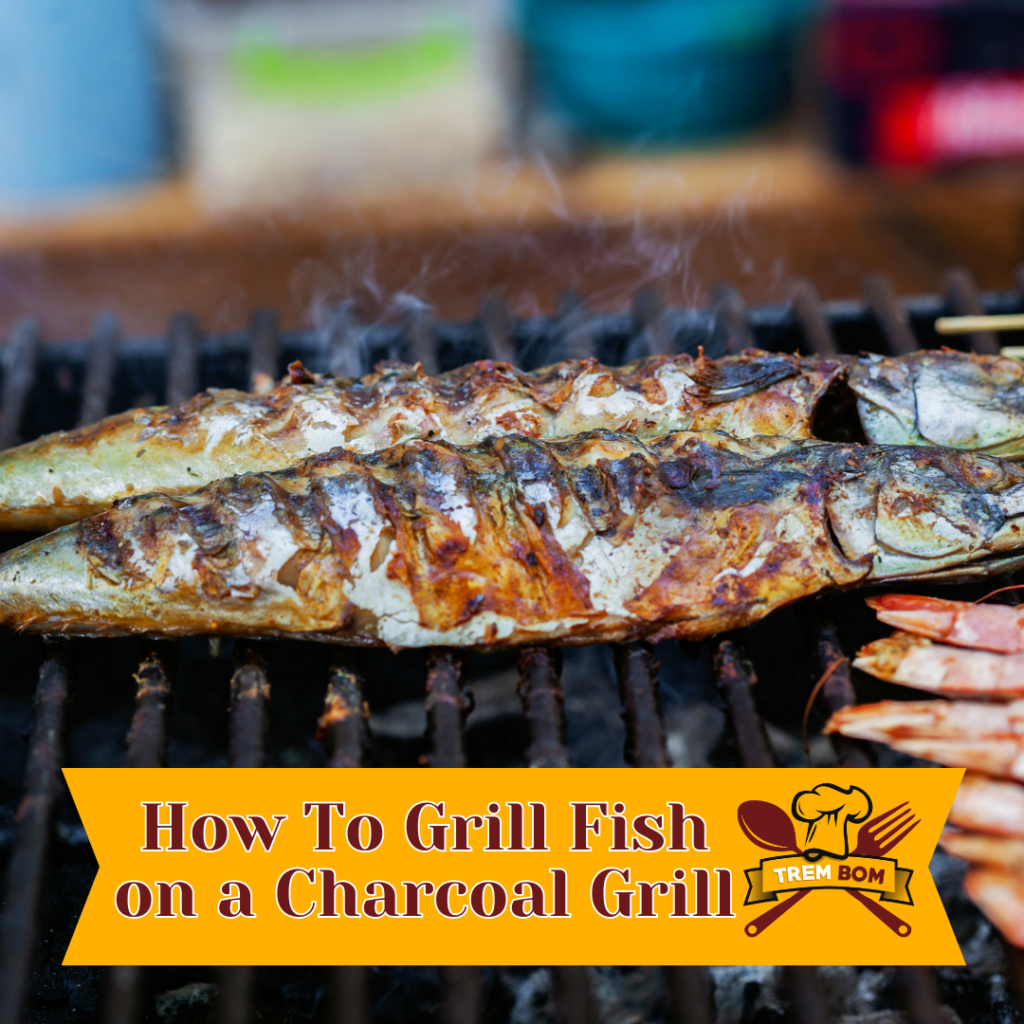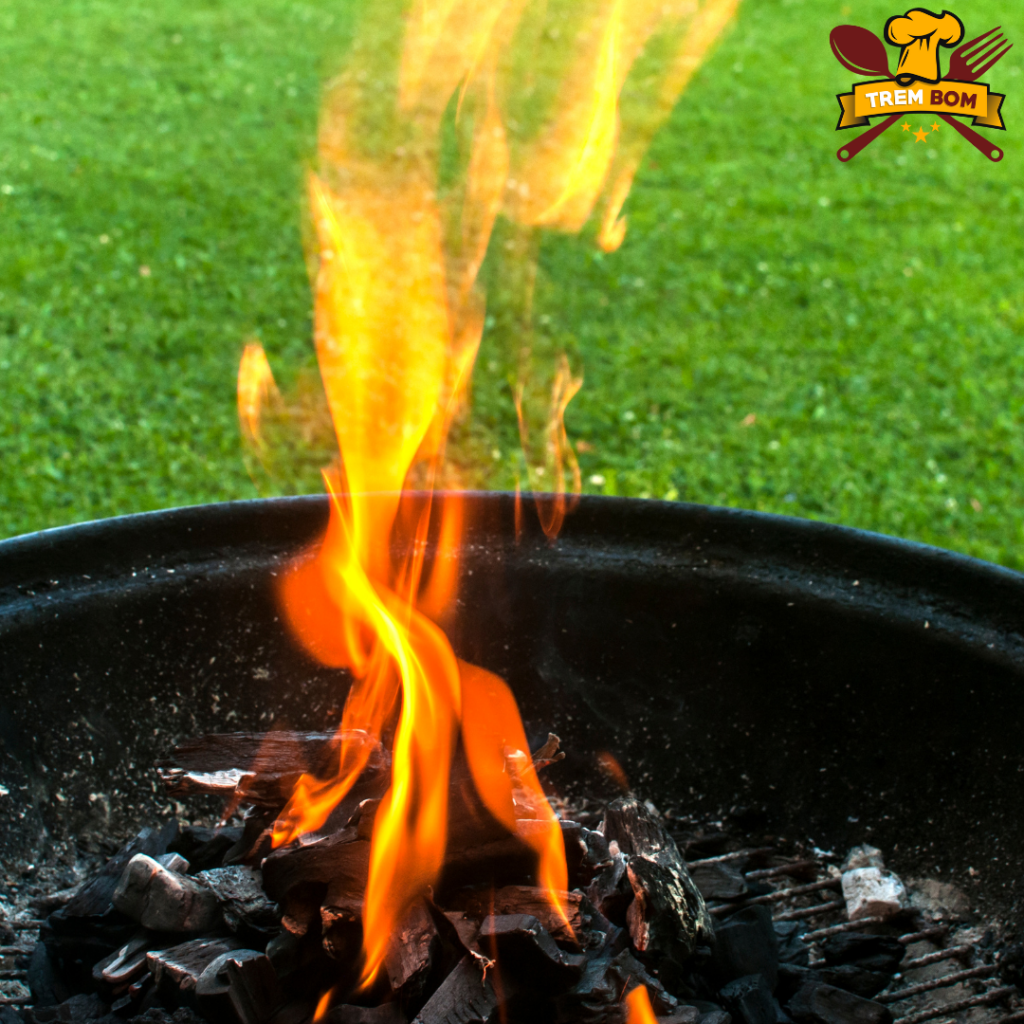
Intro to Grill Fish: Mastering Charcoal Grilling
Grilling fish has long been a beloved culinary tradition, revered for its ability to impart smoky flavors and delicate charred notes, elevating the taste and texture of various fish species. From backyard barbecues to upscale restaurants, grilling fish has become increasingly popular among food enthusiasts seeking a unique and satisfying dining experience.
The Rising Popularity of Grilled Fish Fillets and Whole Fish on the Grill
The popularity of grilling fish can be attributed to several factors that have captivated the taste buds of countless individuals across cultures. Firstly, grilling infuses fish with irresistible smokiness that enhances its natural flavors. The combination of searing heat and gentle smoke creates a tantalizing aroma that entices even the most discerning palates.
Furthermore, grilling imparts a delightful charred texture to the fish’s exterior while keeping it moist and succulent on the inside. This contrast in textures adds depth and complexity to each bite, providing an exquisite eating experience that is difficult to replicate through other cooking methods.
Why a Charcoal Grill Outshines a Gas Grill when Grilling Fish
When it comes to grilling fish, using a charcoal grill reigns supreme. Charcoal grills offer distinct advantages over other types of grills, such as gas or electric ones.
The primary advantage lies in their ability to generate high heat quickly, allowing for efficient cooking and flavorful results. Charcoal imparts an unmistakable smokiness that adds character and depth to grilled fish.
Unlike gas or electric alternatives which can lack this crucial element, charcoal briquettes or lump charcoal produce intense heat combined with aromatic smoke from wood chips or chunks. This combination transforms ordinary cuts of fish into tantalizing delicacies bursting with complex flavors.
Selecting the Best Fish for Grilling: Importance of Type and Quality
The success of grilling fish hinges on selecting the appropriate type and quality of fish. Certain species are better suited for grilling, as they possess firm flesh that can withstand the intense heat without falling apart. Salmon, tuna, swordfish, snapper, mahi-mahi and halibut are excellent choices due to their sturdiness and ability to retain moisture during grilling.
Moreover, ensuring the quality and freshness of the fish is paramount. Opting for sustainably sourced fish not only supports responsible fishing practices but also guarantees a superior taste. Fresh fish from a fish market is always a great choice rather than frozen fish from a supermarket.
Freshness is key when it comes to seafood, so purchasing from reliable suppliers or local markets ensures that your grilled fish will be of exceptional quality. Grilling fish on a charcoal grill has gained immense popularity due to its unique ability to infuse smoky flavors while maintaining moistness and texture.
The advantages offered by charcoal grills over other types provide unparalleled results that tantalize taste buds. However, selecting the right type of fish with firm flesh and ensuring its freshness are essential factors contributing to a successful grilled fish dish.
From Fillet to Whole: Preparing Various Types of Fish for Grilling

Choosing the Right Type of Fish to Grill: From Salmon to Cod
When it comes to grilling fish on a charcoal grill, selecting the right type of fish is crucial. Opting for firm-fleshed fish varieties, such as salmon, tuna, or swordfish, ensures that your fish holds up well during the cooking process.
These types of fish possess a sturdy texture that can withstand the high heat of grilling without falling apart or becoming too delicate. The firmness also allows these fish to develop a delicious charred exterior while retaining their juicy tenderness on the inside.
Keeping it Clean: How to Properly Scale and Prepare Your Fish for Grilling
Before you begin grilling your chosen fish, it is essential to properly clean and scale it. Start by rinsing the whole fish under cold water to remove any loose debris or residual slime. Use a sharp knife to scale the skin by scraping from tail to head in short strokes.
Scaling ensures that you achieve an even cook and prevents any unwanted flavors from seeping into your dish during cooking. After scaling, make sure to thoroughly rinse off any remaining scales.
Once scaled, it is time to gut and clean out the cavity of the whole fish if necessary. This step is especially important if you are working with freshly caught seafood.
Carefully make an incision along its belly using a sharp knife and remove all internal organs while being mindful not to puncture any vital parts like bile ducts or intestines. Rinse the cavity once again with cold water until clean.
Enhancing Your Grilled Fish Fillets: Seasoning Options and Marinade Recipes
To elevate your grilled fish’s flavor profile, consider using various seasoning options and marinades before placing it on the charcoal grill. Simple yet effective seasoning options include salt, pepper, garlic powder, paprika, or lemon zest sprinkled generously on both sides of the fish.
These basic seasonings enhance the natural flavors of the fish without overpowering them. For those seeking more complex flavor combinations, marinades are an excellent choice.
A classic marinade recipe for grilled fish includes a mixture of olive oil, lemon juice, minced garlic, and fresh herbs like thyme or parsley. Allow the fish to marinate in this mixture for at least 30 minutes to absorb the flavors.
The acids in the marinade help tenderize the flesh while infusing it with a delightful tanginess. Remember that marinades and seasoning options can vary depending on personal taste preferences and cultural influences.
Feel free to experiment with different ingredients such as soy sauce, ginger, honey, or even coconut milk-based marinades for a unique twist on your grilled fish. By carefully selecting the right type of fish, cleaning and scaling it properly, and utilizing flavorful seasoning options or marinades, you are setting yourself up for a delectable grilled fish experience that will leave your taste buds longing for more.
Lighting the Way: Preparing Your Charcoal Grill for Cooking Fish

Selecting and Lighting High-Quality Coal: Get the Best from Your Charcoal Grill
Choosing the right charcoal is crucial when grilling fish on a charcoal grill. Opting for high-quality charcoal ensures a consistent and reliable heat source throughout the grilling process.
One popular choice among grill aficionados is lump charcoal, which is made by burning natural hardwood without any additives or binders. Lump charcoal offers several advantages over briquettes, making it an ideal option for grilling fish.
The first advantage of lump charcoal is its superior heat production. Due to its dense composition and lack of additives, lump charcoal burns hotter and faster than briquettes.
This intense heat allows for quick searing of the fish without compromising its moisture or delicate texture. Additionally, lump charcoal produces less ash compared to briquettes, resulting in easier cleanup after your grilling session.
Why Lump Charcoal Has an Edge over Briquettes for Grilling Fish
Aside from their enhanced heat production and lower ash content, there are other advantages to using lump charcoal when grilling fish on a charcoal grill. One significant benefit is that lump charcoal imparts a more natural flavor to the fish due to its pure composition.
Unlike briquettes that can contain fillers or binders, lump charcoal solely consists of hardwood charred into chunks. Furthermore, lump charcoal provides greater control over temperature adjustments during cooking.
Since it ignites faster than briquettes and generates intense heat quickly, you can easily regulate the temperature by adjusting the airflow through the grill vents or by adding more fuel as needed. This flexibility allows you to adapt your cooking technique according to different types of fish or recipes.
Distribute the Heat: Tips for Achieving an Even Cooking Surface on Your Grill
To ensure an even distribution of heat while grilling fish on a charcoal grill, there are several essential tips and techniques to follow. Firstly, it is advisable to arrange the lit charcoal in a single layer, as this allows for a more consistent heat distribution across the grill surface. If you stack the charcoal too high, it may create hot spots and result in uneven cooking.
Another crucial aspect is maintaining proper airflow throughout the grilling process. You can achieve this by adjusting the vents on your charcoal grill.
Opening the vents allows for better air circulation and promotes even heat distribution. If needed, you can control the temperature by partially closing or opening the vents accordingly.
Periodically rotating and flipping the fish during grilling helps ensure uniform cooking. By turning the fish at regular intervals, you expose different sides to any potential hot spots and prevent overcooking in certain areas.
This technique guarantees that each part of your fish receives an equal amount of heat, resulting in a beautifully grilled piece of perfection. By following these tips and selecting quality lump charcoal for your charcoal grill, you are well on your way to mastering the art of grilling fish with precision and finesse.
Arranging Heat Zones: Setting Up Direct and Indirect Heat on the Grill
When it comes to grilling fish on a charcoal grill, understanding how to set up direct and indirect heat zones is crucial. These two methods offer different advantages and drawbacks, allowing you to choose the most suitable option based on the thickness of your fish fillets or steaks.
Understanding the Grill: Direct Heat vs. Indirect Heat Cooking Methods for Fish
Direct heat cooking involves placing food directly above the flame or hot coals, allowing for quick searing and the development of that desirable crispy exterior. This method is ideal for smaller, thinner cuts of fish that cook relatively quickly. It imparts a delightful charred flavor while maintaining the natural juices and tenderness of the fish. In contrast, indirect heat cooking involves positioning the food away from direct contact with flames or coals. This method utilizes radiant heat circulating within a covered grill to cook food more slowly and evenly. Indirect grilling is preferred for thicker cuts of fish as it provides a gentler cooking environment, minimizing the risk of overcooking or drying out delicate fillets.
Benefits and Drawbacks of Each Method When Grilling Fish
Cooking with Direct Heat:
The direct heat method offers several advantages when grilling fish. Firstly, it ensures rapid caramelization on the surface, resulting in beautiful grill marks and an appealing appearance.
Secondly, due to its high temperature nature, direct heat allows for a shorter overall cooking time while preserving moisture within the flesh. However, there are also potential drawbacks to consider when using direct heat.
The intense flames can increase flare-ups that may potentially burn delicate fish fillets if not carefully monitored. Additionally, the risk of sticking to the grill grate is higher with direct heat, making it essential to properly oil the cooking surface beforehand.
Cooking with Indirect Heat:
Indirect heat grilling provides a more controlled and gentle cooking environment for fish. By avoiding direct flame contact, you reduce the risk of charring or burning the delicate flesh while ensuring even cooking throughout.
Consequently, this method is particularly suitable for thicker cuts that require longer cooking times. However, keep in mind that indirect heat grilling may result in less pronounced grill marks and a slightly different texture compared to direct heat.
While it delivers excellent tenderness and juiciness, it may lack some of the distinctive flavors produced by charring at high temperatures.
Determining Which Method Is Suitable Based on Fish Thickness
The thickness of your fish fillets or steaks plays a crucial role in deciding whether to utilize direct or indirect heat when grilling. Thin cuts (approximately ½ inch thick) are best suited for direct heat as they cook rapidly without losing moisture and becoming overdone. Thicker cuts (around 1 inch or more) benefit from indirect heat since it allows for a slower and more even cooking process that ensures thorough doneness without compromising texture.
If you have varying thicknesses within your fish selection, consider using a combination of both methods to accommodate all pieces effectively. By initially searing thicker cuts directly over high heat to develop flavor and grill marks, then transferring them to an indirect zone until cooked through, you can achieve optimal results across the board.
Ultimately, understanding how to set up direct and indirect heat zones on your charcoal grill empowers you with greater control over the grilling process. It ensures that each piece of fish is cooked to perfection, with a beautifully charred exterior or tender and succulent interior depending on your desired outcome.
Flawless Grilling Techniques for Fish Fillets and Steaks: Avoid the Stick and Know when Your Fish is Ready
Preheating the Grill Grate to Prevent Sticking
Grilling fish fillets or steaks can be a delicate process, as the tender flesh of fish is prone to sticking on a hot grill. To prevent this, it is crucial to preheat the grill grate properly.
Begin by cleaning the grill grates thoroughly, removing any debris or remnants from previous cookouts. Once clean, ignite the charcoal and allow it to burn until it reaches a white-hot temperature.
With a wire brush, gently scrape the grates to remove any remaining particles. This process not only ensures a clean surface but also helps prevent sticking by eliminating any potential friction points.
The Perfect Sear: Achieving Beautiful Grill Marks
When grilling fish fillets or steaks, achieving those coveted grill marks adds both visual appeal and enhances flavor. To achieve this, ensure your grill grates are properly heated and lightly greased with vegetable oil or cooking spray before placing the fish on them. This step helps create a non-stick barrier and aids in developing those beautiful sear marks.
Place your seasoned fish fillets or steaks diagonally across the preheated grill grates at a 45-degree angle to achieve those classic cross-hatch grill marks. Allow them to cook undisturbed for about 2-3 minutes per side before carefully flipping them over using a wide spatula designed specifically for delicate foods like fish.
Controlling Heat: Direct vs Indirect Cooking Methods
Depending on the thickness of your fish fillet or steak, you may need to adjust your cooking method accordingly. Thinner cuts benefit from direct heat, where they are placed directly above the hot coals or flame for quick cooking times – typically around 4-6 minutes per side.
For thicker cuts, such as a substantial salmon steak, it is advisable to use the indirect cooking method. This involves placing the fish on a cooler part of the grill, away from direct heat.
This allows for a more gradual and even cooking process, reducing the risk of overcooking or charring. Covering the grill while using indirect heat helps retain moisture and infuse smoky flavor into the fish.
Final Thoughts: Bringing Together All You’ve Learned about Grilling Fish on a Charcoal Grill
Grilling fish on a charcoal grill can be a rewarding culinary adventure that brings out incredible flavors and textures. By following proper techniques such as preheating the grill grate to prevent sticking, achieving beautiful grill marks with a perfect sear, and mastering direct versus indirect cooking methods for different thicknesses of fish fillets or steaks, you can elevate your grilling game to new heights. Not only does grilling fish on a charcoal grill provide delicious results, but it also offers a healthier alternative to traditional cooking methods.
The smoky aroma and charred flavors add an extra layer of complexity to any seafood dish. So don’t be afraid to experiment with different types of fish, seasonings, and marinades.
Embrace the art of grilling and unleash your creativity as you savor each succulent bite. Happy grilling!






